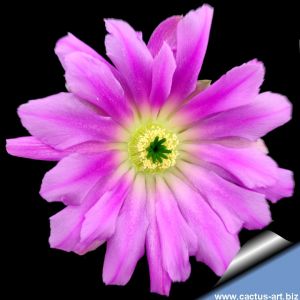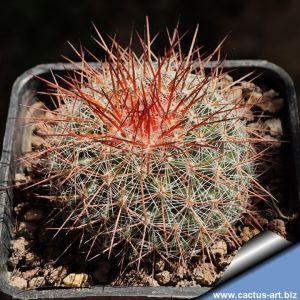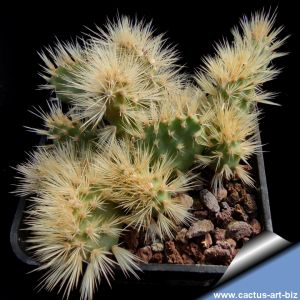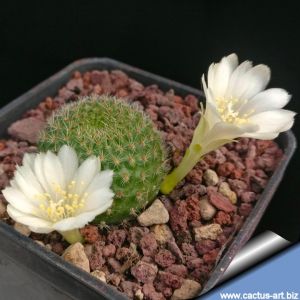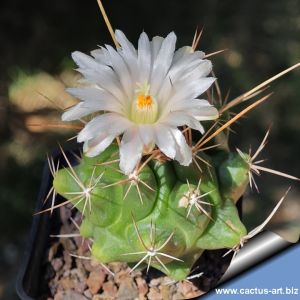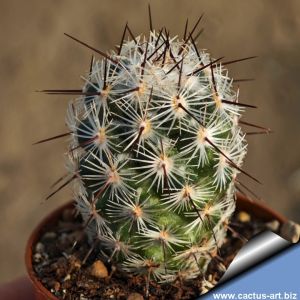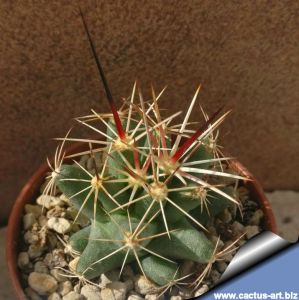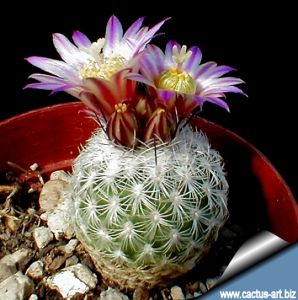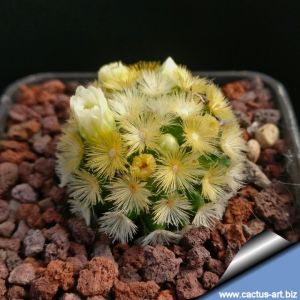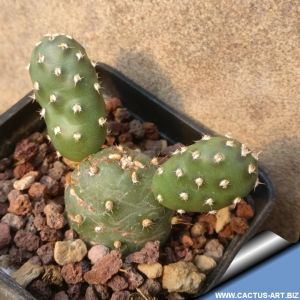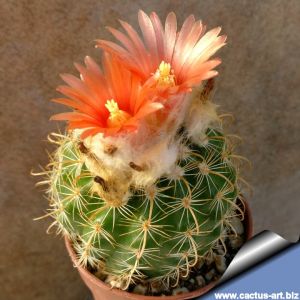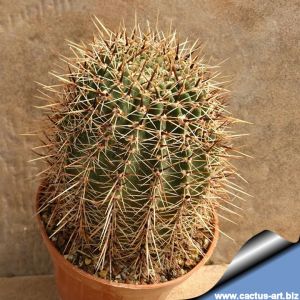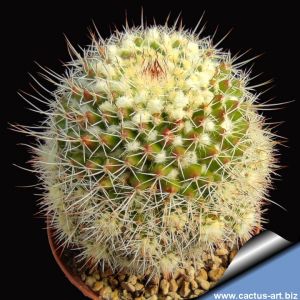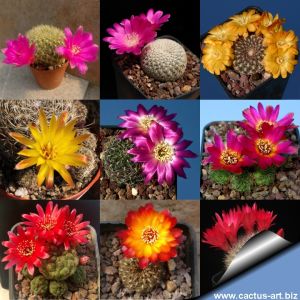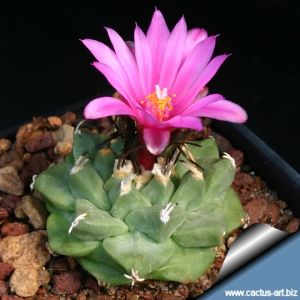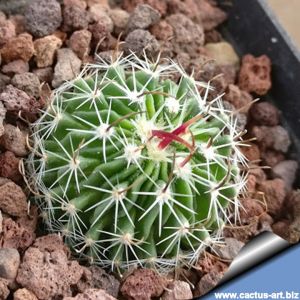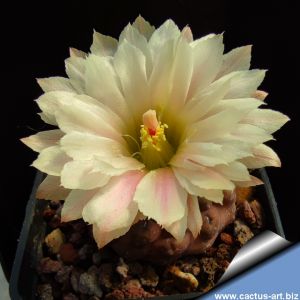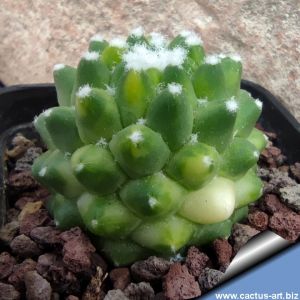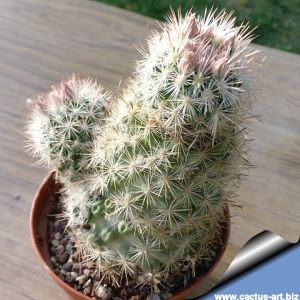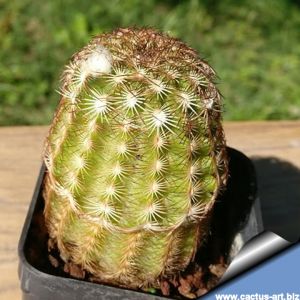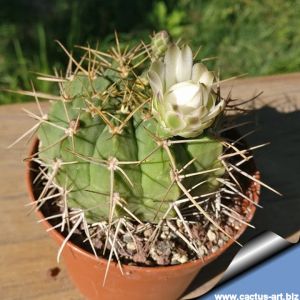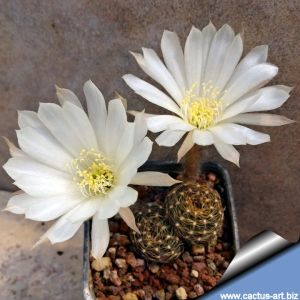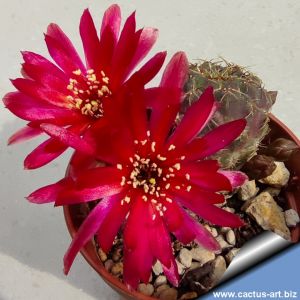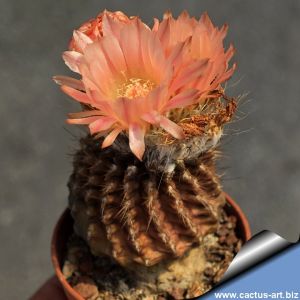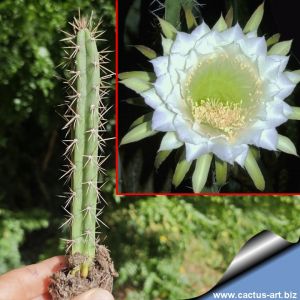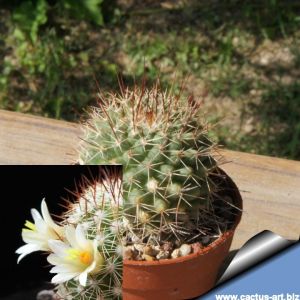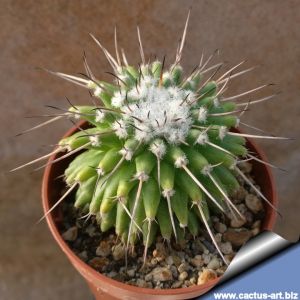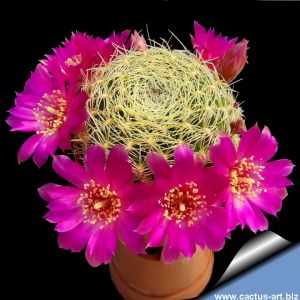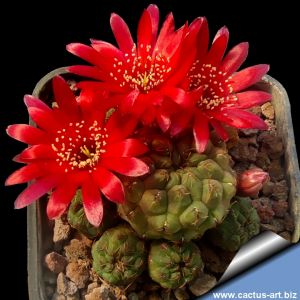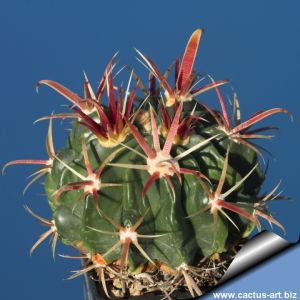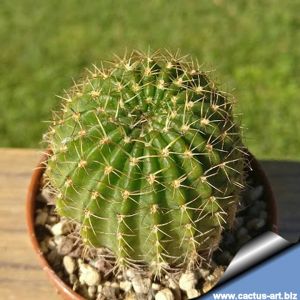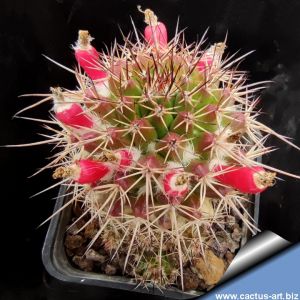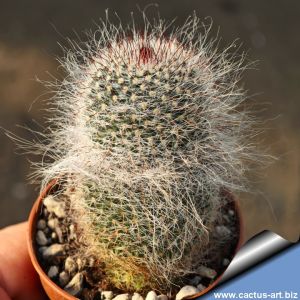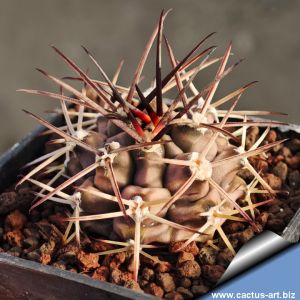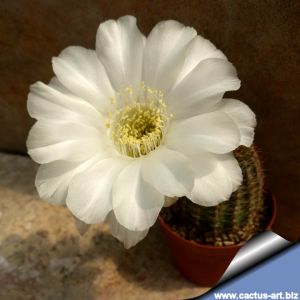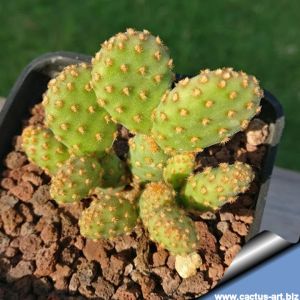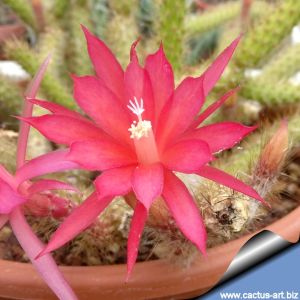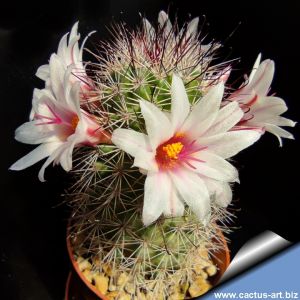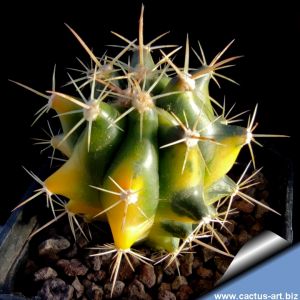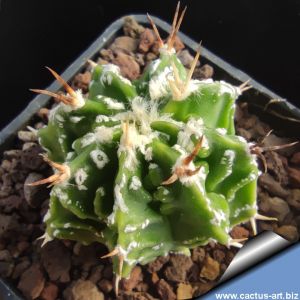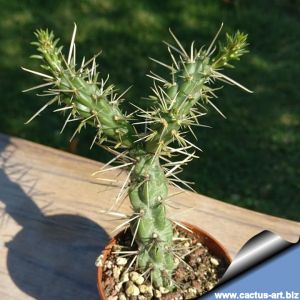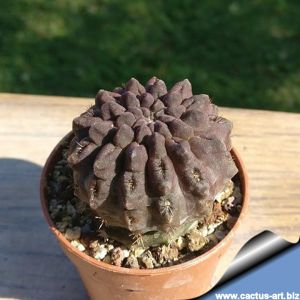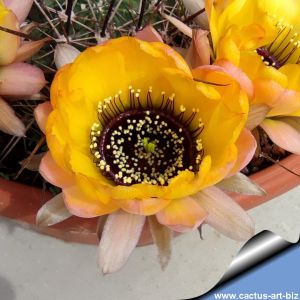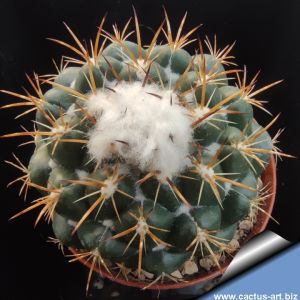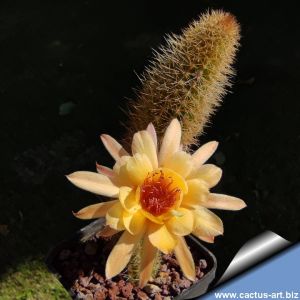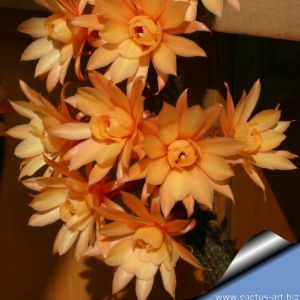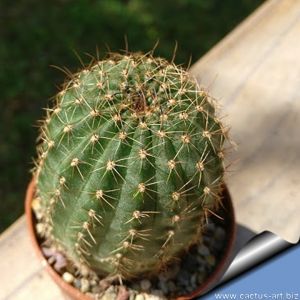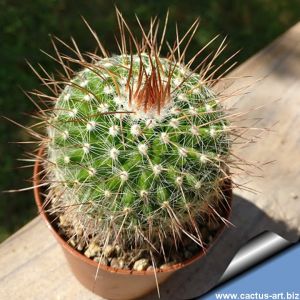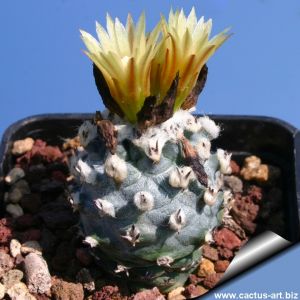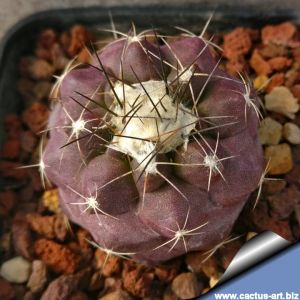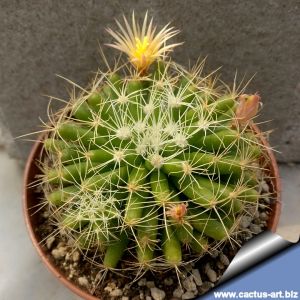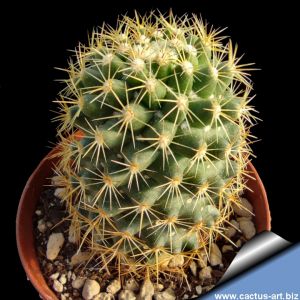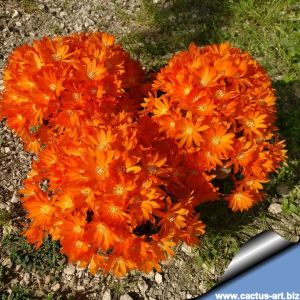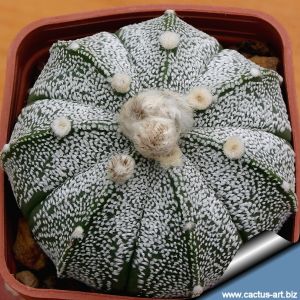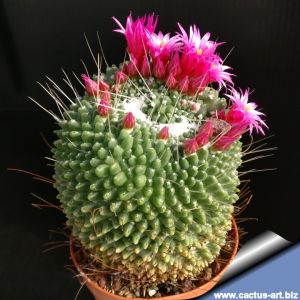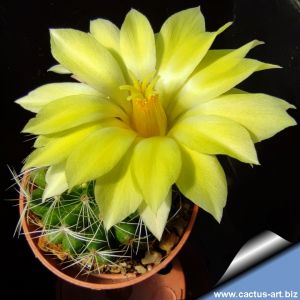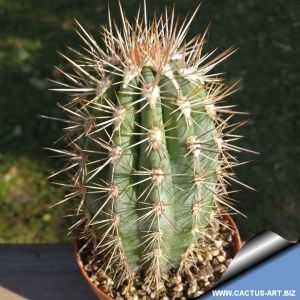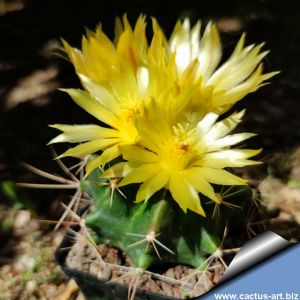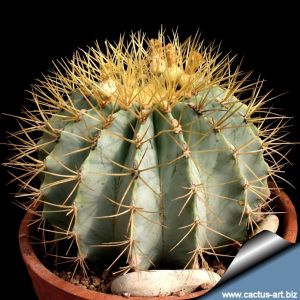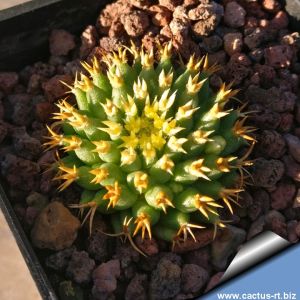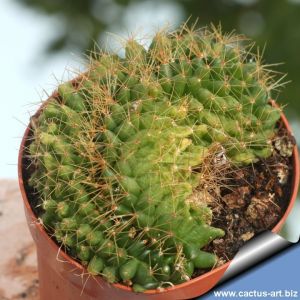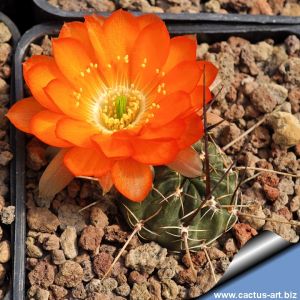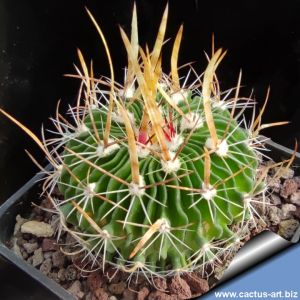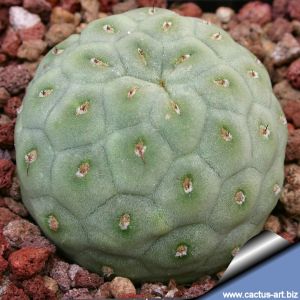-
1
-
2
-
3
Mammillaria sinforosensis v. marionae si distingue per spine radiali bianche, centrali rosso-arancio o beige-brune, e morbida lanugine bianca tra i tubercoli.
-
4
-
5
-
6
Thelocactus tulensis is a globular and strongly tubercled cactus with larger white to pink flowers. The spines are straw coloured up to 7 cm long, evenly distributed on the stem, straight to twisted and flattened.
-
7
Neolloydia conoidea, nota anche come “Cone Cactus”, è una piccola specie con spine radiali bianche e centrali più lunghe e nere. Produce fiori viola-porpora. Il nome comune deriva dalla somiglianza con una pigna chiusa.
-
8
-
9
Corpo allungato ed elegante con un'affascinante combinazione di spine bianche radiali e nere centrali. I fiori, particolarmente decorativi, variano tra tonalità crema e rosa acceso.
-
10
Tight yellow feathery spines.
-
11
Specie compatta che forma bassi cespi di piccoli articoli ellittici o quasi sferici, verdi scuri o blu-verdi, con areole lanose marroni e sottili spine radiali gialle o rossastre. In primavera ed estate produce
grandi fiori gialli.
-
12
-
13
-
14
Mammillaria nejapensis cv. multiprolifera produces in a short time thousands of tiny, tightly pached stems all around its base.
-
15
Mix di Sulcorebutia (varie specie, ibridi e cultivar da seme). Ogni esemplare è esclusivo,
caratterizzato da forme, spine e fiori dai colori diversi.
-
16
Cactus di piccole dimensioni, Turbinicarpus alonsoi possiede una radice a fittone sviluppata e un fusto quasi interamente interrato, visibile soltanto all’apice. Le spine, grigie con punta scura, sono appiattite, rigide come cartoncino.
-
17
-
18
-
19
# # # SPECIAL PLANT # # # (Selected specimen)
H 4 cm. Seed grown. Only this one available.
-
20
-
21
-
22
-
23
Fusto dal verde scuro al nero-porpora, capace di esaltare magnificamente la purezza dei fiori bianchi. Una selezione estremamente raffinata, tra le più eleganti in assoluto.
-
24
Fusti globulari con apice depresso, dal verde oliva scuro al violaceo, si ramificano formando piccoli cuscini. Spine corte, pettinate e rivolte verso il basso. Fiori rosso o porpora lucidi, talvolta con centro più chiaro.
-
25
Clone insolito di Eriosyce che si distingue per i numerosi getti basali. Il corpo muta dall'oliva al marrone, con spine corte e diritte. Il vero spettacolo? Fiori rosa elettrico, enormi rispetto alla pianta - un contrasto mozzafiato.
-
26
Harrisia bonplandii, noto come "The Midnight Lady", produce fiori notturni lunghi fino a 22 cm. La fioritura avviene solo di notte, da cui deriva il nome spagnolo Reina de la Noche (Regina della Notte).
-
27
Mammillaria multidigitata is endemic to San Pedro Nolasco Island in Mexico, where it growson steep slopes. From spring to early summer it sprouts white to cream colored flowers with yellow-green stigma and orange pollen.
-
28
La Mammillaria sempervivi f. monstrosa si riconosce per la singola spina centrale lunga in ogni areola. Cresce in gruppi piatti, con lanuggine bianca tra le areole, rendendola piacevole da osservare e coltivare.
-
29
Cactus bellissimo con piccoli fusti ramificati, interamente ricoperti da fitte spine bianche e appressate, così dense da nascondere completamente il corpo. I fiori sono di un magenta brillante, molto ornamentali.
-
30
Corpo verde-grigio scuro con sfumature porpora più accentuate in pieno sole, superficie tubercolata e
spine corte a lisca di pesce. Fiori alla base, a livello del suolo, in tonalità dal rosso intenso al rosa-viola.
-
31
F. latispinus è il più noto tra i Ferocactus ed è spesso la scelta ideale se se ne desidera uno solo. Le spine centrali sono grandi e striate; quella inferiore è più larga, piatta, spessa, larga 4–9 mm e lunga 4–7 cm, di colore rosso o grigio-rosso.
-
32
-
33
Fiori bianchi con venature centrali rosa più intense, una spina centrale e circa 7 spine radiali. Ramifica abbondantemente dalla base, formando cespi che possono raggiungere i 40 cm di larghezza.
-
34
Grandi fiori rosa, cinque costole molto larghe e robuste spine gialle. Può formare cespi ed è di rapida crescita.
-
35
La Mammillaria hahniana f. elongata si distingue per il fusto che, con il tempo, assume una forma brevemente colonnare. La pianta, ricoperta di lunghe setole bianche, è di grande bellezza.
-
36
Splendida specie, tra i Gymnocalycium più belli e interessanti. Corpo con tubercoli prominenti, dal verde oliva al grigio-rosa. Le spine, lunghe e forti, sono decisamente pungenti e rappresentano il suo tratto distintivo.
-
37
-
38
-
39
-
40
-
41
# # # SPECIAL PLANT # # # (Selected specimen).
Diameter 4.5 cm, h. 5 cm.
-
42
-
43
-
44
-
45
Lobivia jajoiana is a very popular small cactus priced for its multicoloured flowers. This is the yellow flowering form. The hymen (or throat ring of the flower) is always of a very dark purple-violet to black.
-
46
-
47
-
48
-
49
-
50
Mammillaria variaculeata is a clumping cactus forking dichotomously. It has rather uninteresting short spines when young, before making a fierce and very showy mature dark brown spination. However the species comprises plants with variable spine length.
-
51
Selezione speciale del famoso Turbinicarpus flaviflorus, con spine brevissim e suberose, di colore marrone dorato. Il fusto, ricoperto in una pruina glauca tendente al bianco. Una pianta raffinata e immediatamente riconoscibile.
-
52
Rara specie endemica di una ristretta area costiera del Cile. Corpo sferico, da grigio-verde scuro a bronzo-porpora intenso, spesso in piccoli cespi. Tubercoli con areole lanose, da cui emergono spine corte e nere. Produce grandi fiori gialli.
-
53
-
54
-
55
Splendida pianta cespitosa, che sviluppa cuscini compatti formati da numerose teste avvolte in fitte spine bianche, corte e pettinate. In primavera, ogni fusto si orna di un vistoso anello di fiori arancione.
-
56
Ibrido interspecifico F1 tra Astrophytum asterias e A. coahuilense. Mostra caratteristiche intermedie tra i genitori, con un numero di costolature variabile (5-8). Esempio affascinante di incrocio tra specie diverse dello stesso genere.
-
57
Seed-grown plants of variable appearance, areoles mostly without thorns. Deep pink to purple flowers.
-
58
Corpo tondo con lunghi tubercoli morbidi e sottili spine color crema. Il vero punto di forza sono i fiori enormi, di un giallo intenso e luminoso, che creano un contrasto spettacolare e di grande impatto visivo.
-
59
Mexican Giant Cactus, Elephant Cactu,: Sahuaso, Sagueso, Cardón Pelón, Cardón Gigante, Cardón, Senita
-
60
Dal seme nascono sempre sorprese! Le giovani piante sono spinose, ma crescendo le spine diventano meno numerose e strane, uppure non sono più prodotte. Ogni esemplare è unico.
-
61
Ferocactus glaucescens is a medium sized, barrel cactus with greysh-blue stems. Multiple heads are produced as the plant ages and can form a very large mound. The spines are rather neatly distributed, and the unusual-looking white fruits are unmistakable.
-
62
Very nice form with 4 (-6) very short orangish radial spines. The younger spines are yellow and very attractive).
-
63
-
64
Fioriture abbondanti in giallo-ambrato, arancione o rossiccio, con bordi dei petali più scuri. L’imene bianco al centro crea un contrasto elegante con i petali e lo stigma verde. Generosa produzione di fiori.
-
65
-
66
Areoles with almost no or very short spines. Very nice.
-
67
-
68
Cresce nello stesso ambiente di Ferocactus echidne REP1139A e Mammillaria priessnitzii REP1134.
-
69
Gymnocalycium nidulans distingushes for the dense covering of stout grey interlacing spines. The plants typically got a dull brownish-green body colour and is one of the most decorative cacti of the genus Gymnocalycium.
-
70
-
71
Questo cultivar differisce dagli ibridi OR-MY standard per l’assenza o quasi totale mancanza di puntini pianchi, mostrando un colore uniforme verde brillante, verde-blu, grigio-verde o verde-malva, a seconda dell'esemplare.
-
72


